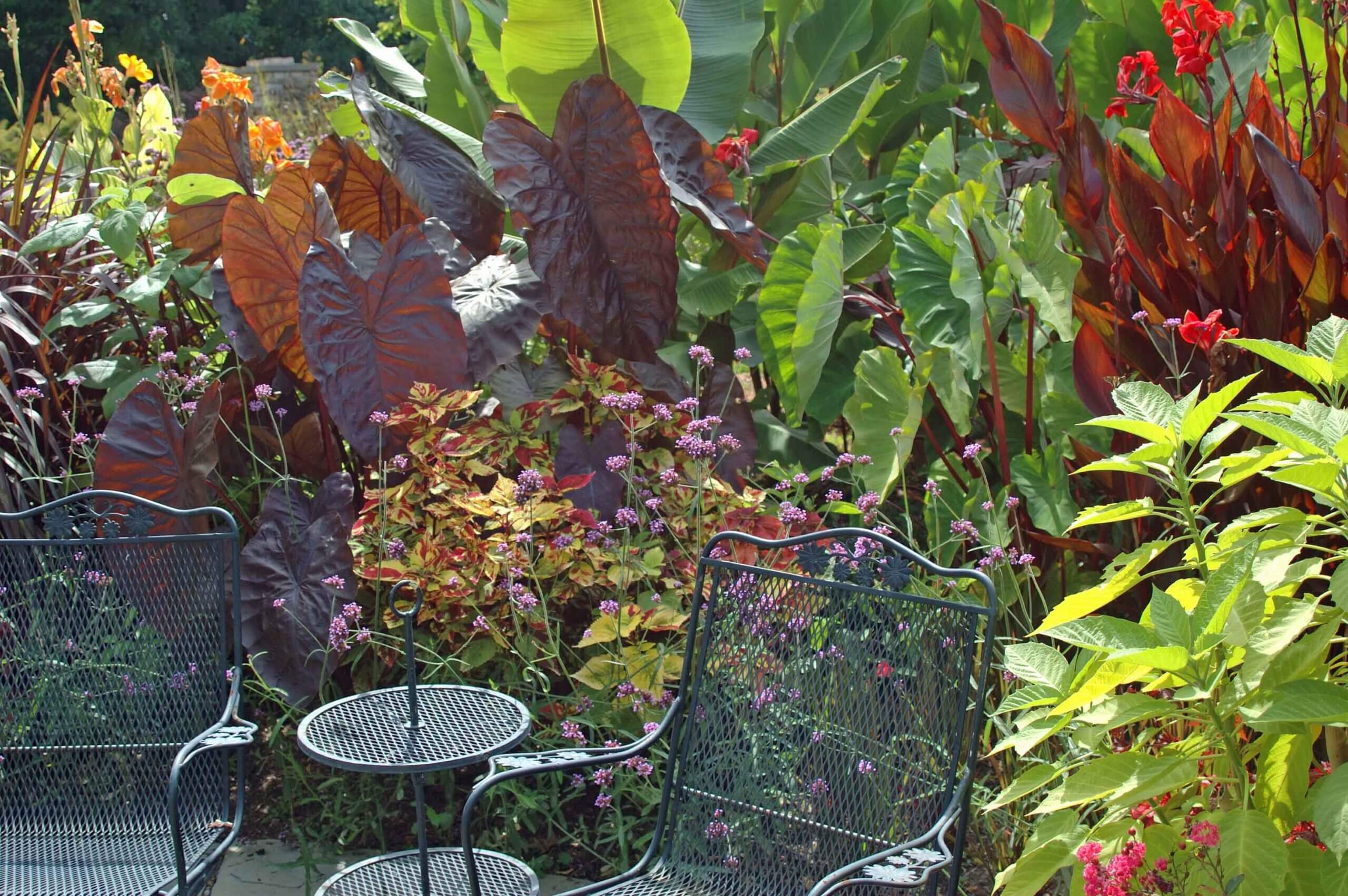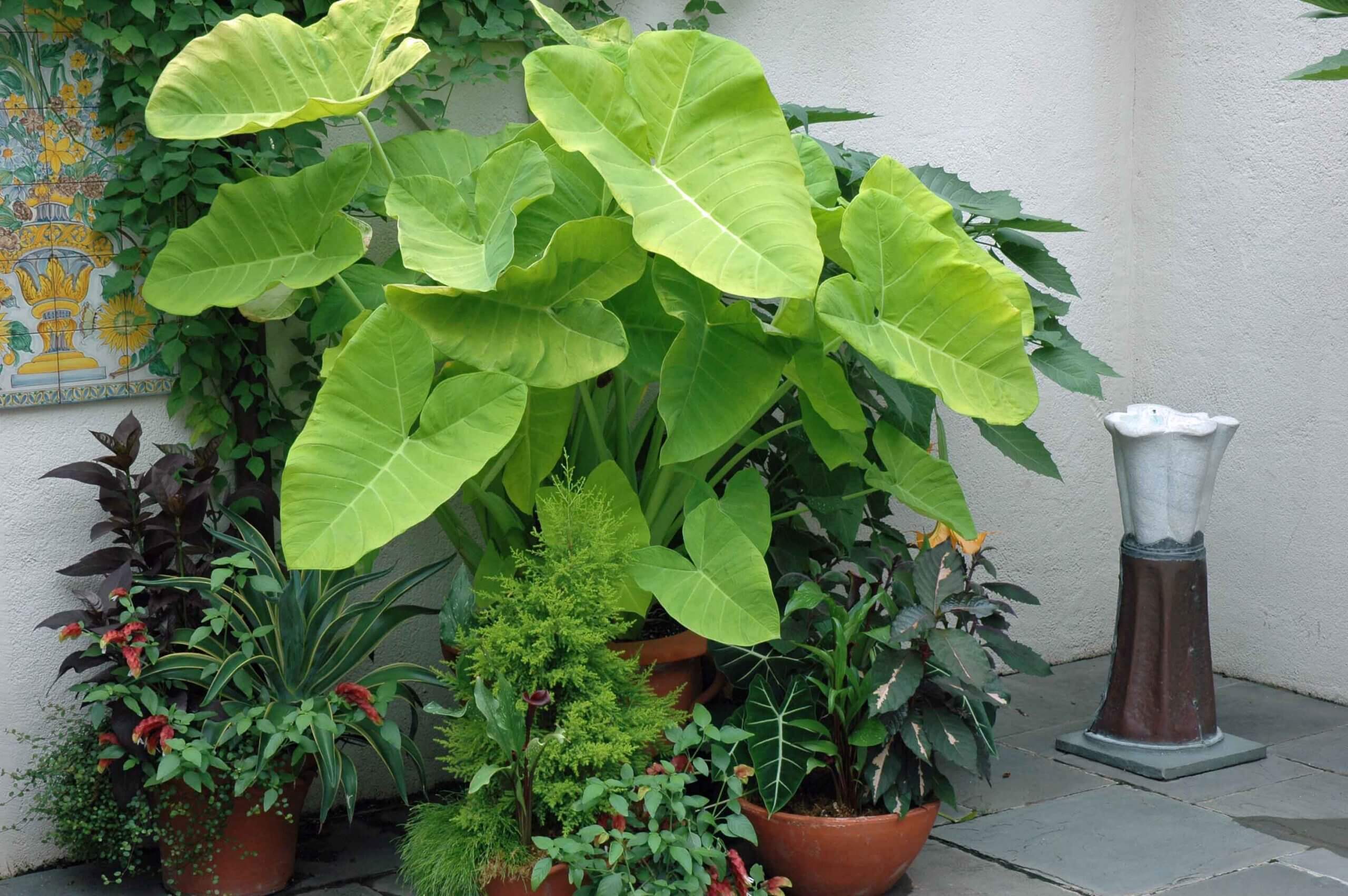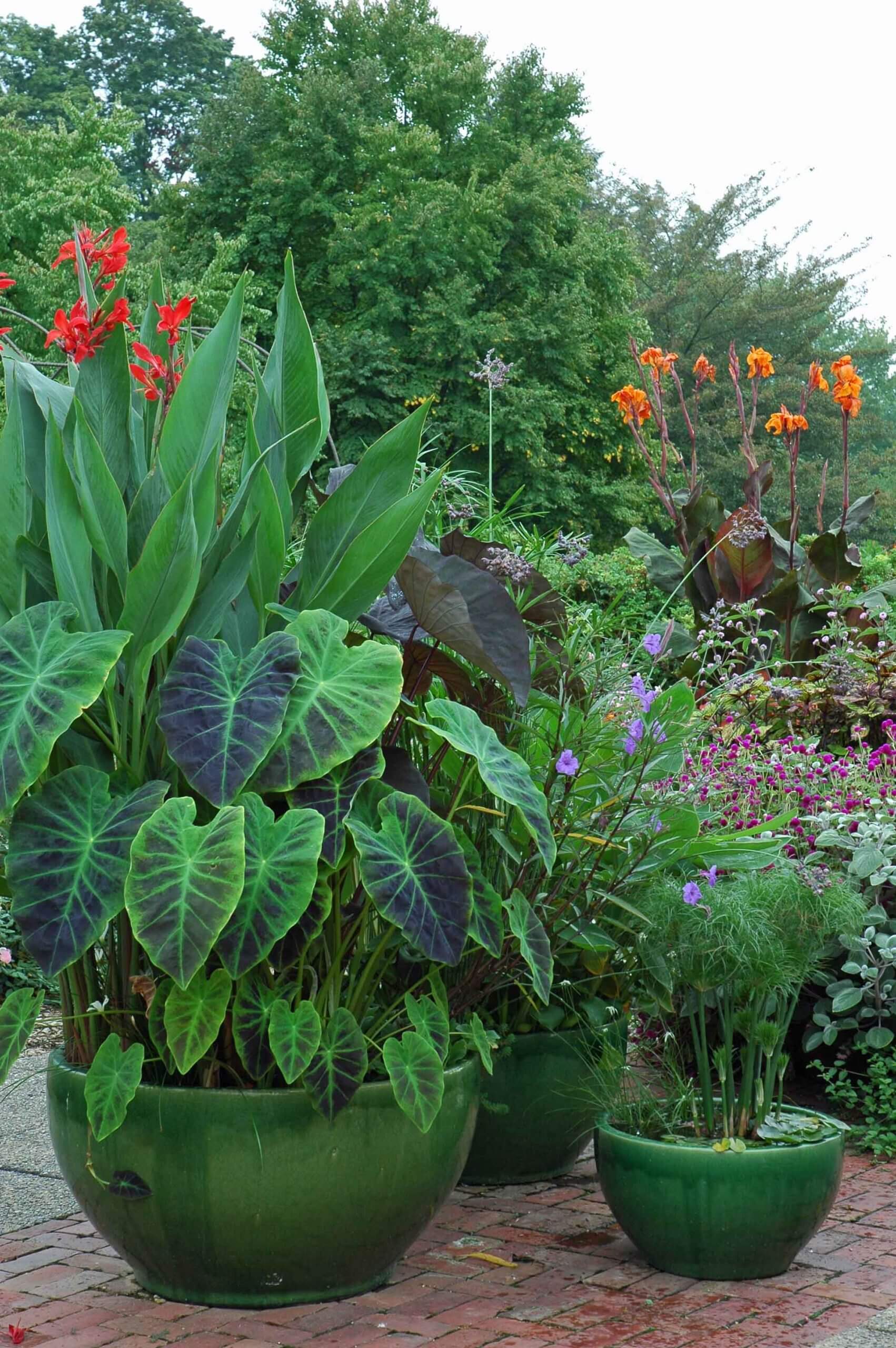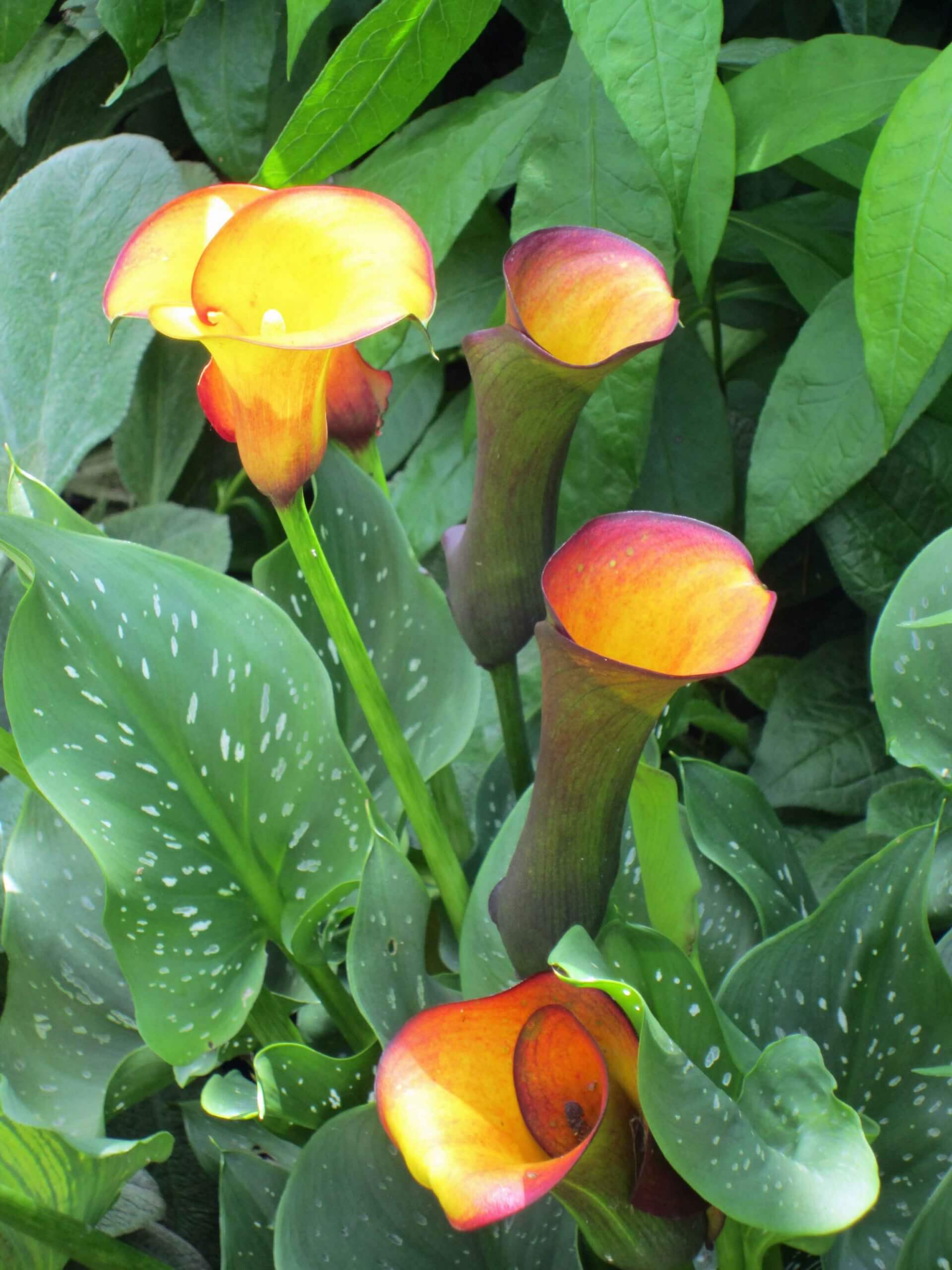
Late spring is the perfect tome to add summer bulbs to landscape and container plantings. Why do we wait so late to plant the bulbs, tubers, and corms of various elephant ears, all sorts of lilies, gladiolus, oxalis, dahlias, and everything else deliciously summery from bananas to cannas? It is because in most parts of the United States (especially here in the Southeast) soil temperatures are finally warm enough for tender tropicals, indigenous to Southeast Asia, South America, Africa, Mexico, and Polynesia, to survive and thrive.
 Many summer bulbs acclimate well where summers are hot. And where winters are mild they may return even bigger and better the next year, if they are correctly sited in the right spot. But, most are best treated like summertime annuals – enjoy them, then replant more next year. Or dig and store them through winter, if you have the inclination.
Many summer bulbs acclimate well where summers are hot. And where winters are mild they may return even bigger and better the next year, if they are correctly sited in the right spot. But, most are best treated like summertime annuals – enjoy them, then replant more next year. Or dig and store them through winter, if you have the inclination.
So, how do you choose which summer bulbs to plant? It depends on the style of your landscape. A cottage garden would not look the same without drifts of elegant lilies, whereas a tiki hut begs to be surrounded by enormous elephant ears. The colorful leaves and hot flowers of cannas easily crossover from traditional Victorian to modern eclectic gardens. A butterfly garden must have Liatris. And, crinum, spider lilies, four o’clocks, and tuberose belong outside any traditional Southern home.

Ornamental Banana
Nothing adds a tropical feel to a poolside like enormous banana leaves swaying back and forth in the gentlest wind. Some bananas are better suited to being containerized, so that they can be protected in wintertime. The cold-hardiest perennial banana for Zone 5-11 landscapes is the hardy banana (Musa basjoo), and one of the most compact is Musa ‘Dwarf Cavendish.’
Plant banana rhizomes in late spring, so that they can get well-established while the soil is warm. Though the entire clump will die back in winter, it will re-emerge even larger in circumference in early May and quickly shoot upwards to top out around 8-10-feet tall. Bananas need as much sun as possible and love humidity. Though you may see a flower on your plant, you probably won’t get fruit unless you reside in the Deep South. A consolation is that you can use banana leaves to wrap and grill meat for your own backyard luau.
Elephant Ears
A dramatic summertime focal point is the tropical elephant ear. This common name has been associated with several species to include Alocasia, Colocasia, and Caladium, as well as many similarly-shaped houseplants, including the chartreuse-leafed Xanthosoma ‘Lime Zinger.’ The thick, bulbiferous stems or bulbs vary some in appearance as does the showy foliage of these plants. Generally, the leaf tips of Alocasia point upwards like they have been lifted by the wind. Those of Colocasia, also known as Taro, appear more heart-shaped, presenting a flatter face with the basal tips pointing towards the ground, with the exception of a few smaller varieties and the enormous, gravity-defying Colocasia gigantea ‘Thailand Giant’. Caladium are much smaller, with very colorful foliage in various patterns in red, white, and/or green.

Both Alocasia and Colocasia grow best sited in part shade to full sun and planted in compost-rich, moisture-retaining soil. They also perform especially well in pots. A perfect potting medium for growing elephant ears in containers is Black Gold® Waterhold Cocoblend Potting Soil, which naturally retains water through the power of coir (coconut pith) and sphagnum peat moss. This potting soil is further enriched with beneficial earthworm castings and porous perlite and pumice for optimal growth and aeration.
A tip for success growing Caladium is to plant the bare tubers anywhere you like, from a traditional shady spot in the landscape to sunlit container, allowing them to adapt to their summer location as their leaves develop. They can tolerate being a bit drier in deep shade, but Caladium planted in full sun need constant moisture. They have to be lifted and stored in the fall, if you garden above Zones 10-11. Also, do not plant your Caladium too early in the cool spring soil, or they may rot.
Cannas
Cannas must be applauded, while we are covering big-leaved plants. These bold perennials grow in blazing heat with theatrical upright leaves ranging from two to ten feet tall and ever-blooming flowers from pastel pink, white, and bright yellow, to rich apricot, hot orange, and blood-red. Again, rich soil, consistent moisture, and sunlight are preferred by Cannas, with the exception of the white variegated-leaved ‘Stuttgart’, which grows best in part shade.
Calla Lilies
A favorite flower of summer brides, the calla lily (Zantedeschia spp.) is not a true lily but a member of the Araceae. Grow solid green-leaved callas in moist sites in the garden, in containers filled with water-retaining potting mix, or sunk directly into a water garden. Variegated-leaved varieties prefer somewhat drier locations.
Rain Lilies
Rain lilies (Zephyranthes) are late-summer delights. Native to the arid Southwest, from Texas to Colombia, these low starry flowers burst into bloom almost overnight after a good soaking rain. Rain lilies will easily colonize an area when planted in full sun and well-drained soils.

Spider Lily
A similar event occurs with the red spider lily (Lycoris radiata), aka the surprise lily or more aptly named hurricane lily. A globe-shaped cluster of shiny red blooms emerges on a bare stalk after a hard rain around the first of September, which coincides with the peak of hurricane season. After flowering, its broad, deep green leaves emerge to grace your garden through the entire winter. This bulb wants well-drained soil and lots of sunlight.
Lilies
Depicted in ancient art, stylized in woven tapestries, and still gracing our homes and altars, lilies (Lilium spp.) are beloved for their recognizable, open, six-petaled flowers and intensely sweet fragrance. True cultivated lilies are grouped by type, Asiatics, orientals, martagons and trumpets among others, which can be extremely confusing to distinguish. (A good reference can be found at The North American Lily Society website.) Lilies are long-lived perennials that prefer to grow in full sun to part shade, again in extremely well-drained soils with adequate moisture.
A lily planting secret that was shared with me by Becky Heath of Brent and Becky’s Bulbs, is to plant lily bulbs on their sides. Due to their open, layered bulbs (reminiscent of a blooming onion at your favorite steak house), lilies may trap water in-between their layers in the wintertime, which can cause rot. This unusual side-planting method does not harm the way lilies grow and works well in both garden beds and containers.
This article offers just a quick sampling of the many marvelous summer bulbs available. To learn more about the wide variety of summer bulbs that may be perfect for your garden, check out the Brent and Becky’s Bulbs website. Tony Avent’s Plant Delights Nursery in Raleigh, North Carolina is another good source. Or just go local, and visit your favorite local garden center.

